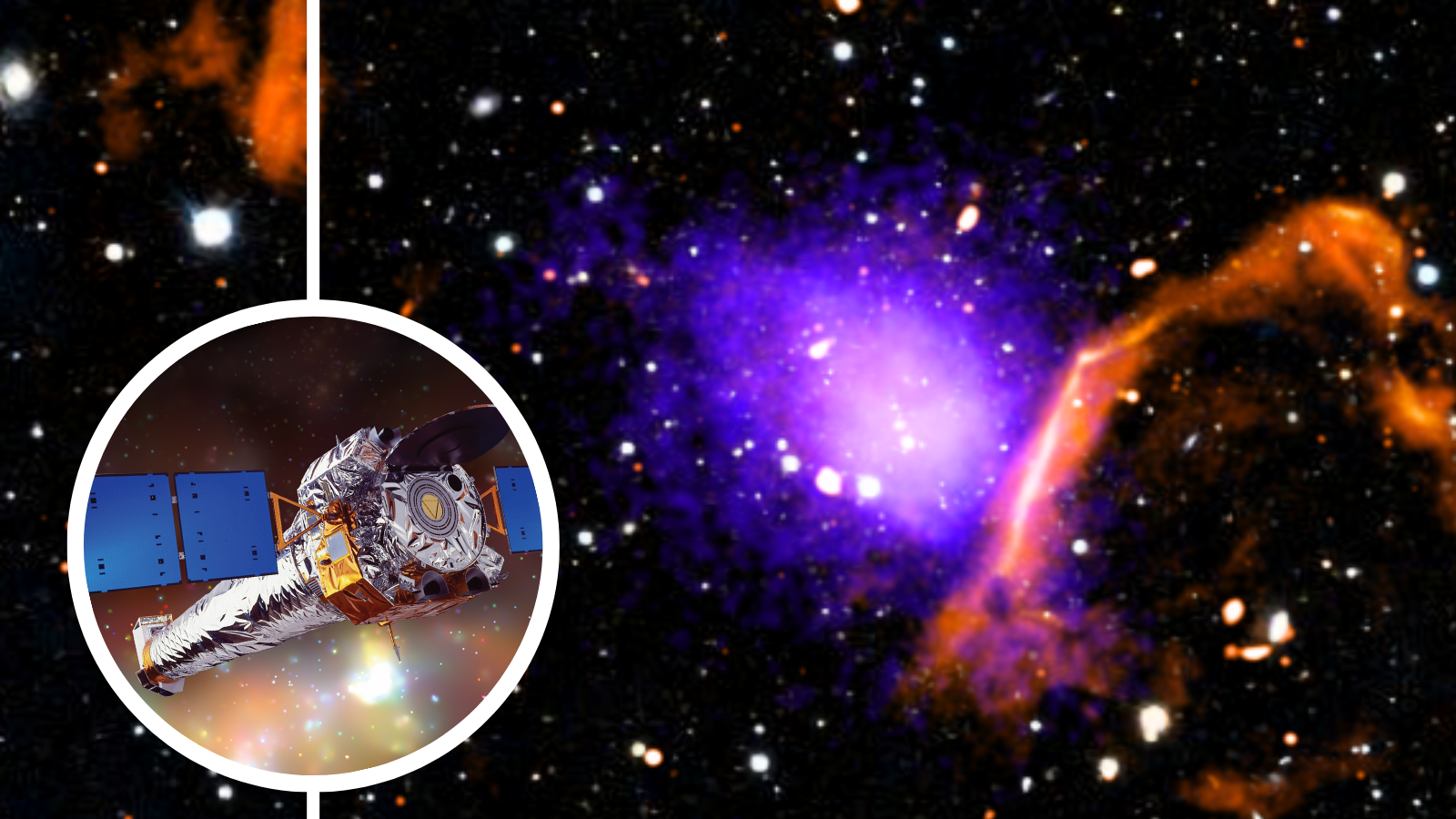
Using NASA's Chandra X-ray space telescope, astronomers have discovered that a galaxy cluster is wrapped in an envelope of energized particles that's 20 million light-years wide. The discovery raises the question of how cosmic particles remain energized over a long period of time.
The largest such cloud ever seen, this cosmic envelope surrounds the massive galaxy cluster PLCK G287.0+32.9, which is located 5 billion light-years from Earth.
The researchers behind the find theorize that, rather than receiving energy from nearby galaxies, this vast cloud of charged particles is energized by monstrous and powerful shockwaves, in addition to turbulence rippling through the hot gas that exists between the galaxies in PLCK G287.0+32.9.
"We're starting to see the universe in ways we never could before," study team leader Kamlesh Rajpurohit, of the Center for Astrophysics (CfA) at Harvard & Smithsonian, said in a statement. "And that means rethinking how energy and matter move through its largest structures."
Search for cosmic relics
PLCK G287.0+32.9 was first discovered in 2011 by Europe's Planck satellite, immediately grabbing the attention of astronomers with its massive size and the fact that it is exceptionally hot.
This made PLCK G287.0+32.9 a prime target for scientists aiming to investigate how galaxy clusters form.
Earlier investigations of this massive galaxy cluster had revealed two bright artifacts around PLCK G287.0+32.9 that appeared to be the results of shockwaves lighting up gas at the edge of this massive structure.
However, new observations have revealed something that hadn't been identified before: It isn't just the edge of this cluster that is glowing. Rather, the whole cluster is alight, with a faint radio wave glow that's about 189 times as wide as the Milky Way.

This radio glow indicated to the team that there's a much more powerful phenomenon at work in PLCK G287.0+32.9 than was previously suspected.
"We expected a bright pair of relics at the cluster's edges, which would have matched prior observations, but instead we found the whole cluster glowing in radio light," Rajpurohit said. "A cloud of energetic particles this large has never been observed in this galaxy cluster or any other."

Prior to the discovery of this particle envelope, the largest such cloud known to astronomers was the one that surrounds Abell 2255, spanning around 16.3 million light-years.
The heart of a cosmic bubble
Diving deep into the central region of the galactic cluster PLCK G287.0+32.9, the team discovered an 11.4-million-light-year-wide radio halo. Its size isn't the only extraordinary thing about his halo, however; it's also the first large radio halo seen at the frequency 2.4 gigahertz (GHz).
The fact that such vast haloes aren't usually seen at this radio frequency suggests to the team the presence of cosmic ray electrons and magnetic fields stretched out to the edge of clusters like this one. What they don't know, however, is how these electrons are accelerated over such enormous distances.
"Very extended radio halos are mostly only visible at lower frequencies because the electrons that produce them have lost energy — they're old and have cooled over time," Rajpurohit explained. "With the discovery of this enormous size halo, we are now seeing radio emission extending all the way between the giant shocks and beyond, filling the entire cluster.
"That suggests something is actively accelerating, or re-accelerating the electrons, but none of the usual suspects apply. We think that giant shockwaves or turbulence could be responsible, but we need more theoretical models to find a definitive answer."
In addition to providing new mysteries to investigate, the discovery of this charged particle envelope could help astronomers study cosmic magnetic fields.
This could, in turn, reveal how these fields have helped to shape the cosmos on its largest scales, one of the most pressing mysteries in astronomy.
The team's research was presented at the 246th meeting of the American Astronomical Society on June 9 and was published in the May edition of the journal Astronomy & Astrophysics.







